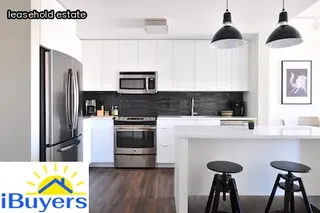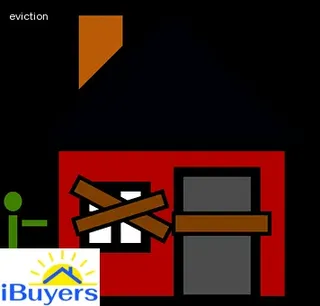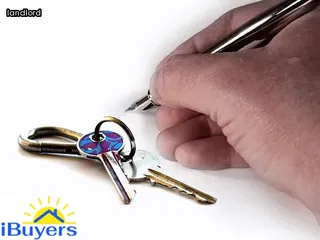Using DoorLoop for Ohio's eviction process can offer numerous benefits for landlords and property managers. Firstly, the entire process is simplified with clear instructions and an easy-to-use interface.
This streamlines the entire eviction process making it faster and more efficient. Additionally, DoorLoop helps to ensure compliance with all relevant state laws, which can be complex and difficult to understand.
Furthermore, the platform provides helpful resources such as legal documents, model notices and access to a network of attorneys who specialize in tenant law. In addition, there are automated reminders that help landlords stay on top of important deadlines throughout the eviction process.
All of these features save time and money while providing peace of mind that all regulations are being followed properly.

In the state of Ohio, it is important to understand the time frame for evicting a tenant. The length of the eviction process and timeline can vary depending on the reasons for eviction and any potential legal action that may be taken by either party.
Generally speaking, a landlord or property manager must follow all local laws when evicting a tenant, as well as serve written notice according to state statutes. This notice should include information about payment owed and/or other reasons why eviction is being recommended.
After issuing this notice, the tenant has a certain amount of time to comply with the terms before legal proceedings can begin. The next step in an Ohio eviction is usually filing an Unlawful Detainer lawsuit in court which can take anywhere from 30-60 days depending on the circumstances.
Once a judgment has been made in favor of the landlord or property manager, they must then serve a writ of possession which gives the tenant 5 business days to vacate the premises before they are evicted by law enforcement officers. Understanding these steps and timelines is essential when evicting a tenant in Ohio.
Putting your real estate portfolio on DoorLoop is a great way to streamline the tenant eviction process. By utilizing DoorLoop, landlords and property managers in Ohio can easily follow a step-by-step guide to evicting tenants while keeping track of all documents and payments throughout the entire process.
First, you must ensure that your state's laws are being followed; in Ohio, eviction notices must be delivered to the tenant in writing or posted on their front door. Next, you'll need to fill out a complaint form and file with the court; this will initiate the legal eviction proceedings.
Once served with notice, tenants have three days to respond before appearing at a hearing; if they fail to arrive at court or provide sufficient defense for their case, then the landlord is granted a judgment of possession from the court. Finally, if necessary, landlords can hire an enforcement officer to physically remove tenants from their property and return it to its rightful owner.
With DoorLoop's intuitive interface and comprehensive resources, landlords can confidently navigate through each step of evicting tenants in Ohio.

In Ohio, landlords and property managers should be aware of the common reasons for evicting a tenant before beginning the process. These include violations of rental agreements or lease terms, nonpayment of rent, criminal activity on the premises, causing or allowing damage to the rental unit, and using the rental unit for illegal purposes.
Tenants can also be evicted in Ohio if they engage in behavior that is dangerous to other tenants or disrupts their peaceful enjoyment of the premises. Landlords must always follow the strict legal guidelines when evicting a tenant in order to avoid potential lawsuits and other complications.
Knowing which circumstances qualify as reasonable grounds for eviction can provide a crucial advantage when dealing with difficult tenants.
A Notice to Comply is a document that is used by landlords and property managers in Ohio when evicting a tenant. It must be served before an eviction lawsuit can be filed and it informs the tenant of the legal remedy they need to take in order to remain in the rental property.
The notice generally outlines the exact lease violations that have been committed, and provides a certain amount of time for the tenant to comply with the terms of the lease. If the tenant does not take action within the specified time frame, then the landlord or property manager has legal grounds to file an eviction lawsuit.
It is important for landlords and property managers to understand when, why, and how a Notice to Comply should be used so that they can ensure their rights as landlords are being upheld.

Serving a tenant with an eviction notice is the first step in the process of evicting a tenant in Ohio. It is important for landlords and property managers to ensure that the notice is served properly in order to avoid any legal issues.
When serving the notice, it is required for the landlord or property manager to give the tenant a copy of both the eviction notice and related court paperwork. Furthermore, it is necessary to make sure that the tenant has been given enough time to respond before filing an eviction lawsuit.
The best way to serve tenants with an eviction notice is by delivering them personally or having an authorized representative deliver it on behalf of the landlord or property manager. Additionally, landlords and property managers should also consider sending a copy of the notice via certified mail as proof of delivery.
Lastly, if all else fails, landlords may post a copy of the notices on their tenant’s door as another option. By following these tips, landlords and property managers can ensure that they are serving tenants correctly when evicting them in Ohio.
Asking a tenant to leave a property in Ohio is not an easy task, and it requires careful consideration of the legal ramifications. Before evicting a tenant in Ohio, landlords and property managers should be familiar with the local laws that govern such matters and take proactive steps to ensure their rights as well as those of their tenant are protected.
This includes giving proper notice to any affected tenants, providing information on the eviction process, and writing up an agreement for compliance. In addition, landlords should be aware of various strategies for asking tenants to possess premises, such as offering them financial incentives or alternative housing arrangements if applicable.
Being firm yet fair when communicating with a tenant can also help to ensure that the eviction process runs smoothly and efficiently.

The process of getting possession of a property after an eviction in Ohio can be complex and time-consuming. To ensure that landlords and property managers are aware of the legal obligations involved, it is important to follow certain guidelines.
First, once a tenant has been evicted, all locks must be changed and the premises secured. Second, the landlord must obtain a writ from the court which will enable them to take physical possession of the rental unit.
Third, when taking possession of the premises, landlords should exercise caution and respect the tenant’s rights; they should not enter or remove any personal items unless they have permission from the tenant or a court order. Fourth, if necessary, landlords may also need to hire an officer to assist with enforcing an eviction order.
Finally, landlords should remember their obligation to restore any damaged property caused by their tenants during the eviction process in Ohio. Following these steps will help ensure that landlords are acting within their legal rights and obtaining possession quickly and efficiently.
In order to ensure that an eviction is legally valid, landlords and property managers in Ohio must be well-equipped with the necessary evidence. It is important that they are prepared when it comes to filing a complaint in court, as well as providing proof of violations or defaulted payments.
In some cases, this may include documents such as copies of rental agreements, leases and security deposits, records of late payments or bounced checks, written complaints from neighbors concerning disruptive behavior, and photos or videos of damages. Additionally, landlords should also make sure to include a detailed accounting of all damages incurred during the tenancy period.
When possible, it is recommended to have witnesses present who can attest to a tenant breaking the terms outlined in the lease agreement such as having unauthorized occupants or pets. Having a comprehensive understanding of the state’s landlord-tenant laws will help landlords avoid any potential legal issues that may arise.

Eviction can be a complex process, so it’s important for landlords and property managers to have the right resources to help them through it. Fortunately, there are many free online resources dedicated to helping Ohio landlords understand their rights and duties when evicting a tenant.
These resources can streamline the eviction process significantly by providing step-by-step instructions and legal forms that are specific to Ohio. Additionally, there are helpful resources like downloadable checklists to ensure all necessary steps have been taken throughout the eviction process.
With these free online tools, Ohio landlords and property managers can have the confidence they need to complete an eviction in an effective manner while staying within the bounds of the law.
Using the right strategies can save landlords and property managers time and money when evicting a tenant in Ohio. DoorLoop is a great tool to make the eviction process more efficient, allowing landlords to quickly generate all of the required forms and documents.
The software also helps to keep records organized, track payments, and streamline communication with tenants. Additionally, DoorLoop offers an online payment portal that makes it easier for tenants to pay rent on time.
By automating processes with DoorLoop, landlords can save time and money while making sure they are following state laws throughout the entire eviction process. With its user-friendly interface, landlords can easily create customized notices, set up automated reminders for tenants, and even receive notifications when forms have been completed or signed.

Signing up and accepting the terms and conditions of DoorLoop is a crucial step for landlords and property managers in the process of evicting a tenant in Ohio. Before initiating an eviction, it is important to understand the service's policies, as well as the applicable laws governing this action.
DoorLoop provides access to all of the necessary documents and forms needed to legally evict a tenant, including lease agreements and court filings. Additionally, they offer helpful guidance and support at every stage of the process.
Landlords must create an account with DoorLoop in order to use their services, which requires providing personal information and agreeing to their terms and conditions. Once accepted, landlords can take advantage of their comprehensive suite of tools designed to make eviction proceedings run smoothly.
Through DoorLoop's user-friendly platform, landlords can easily upload documents like rental contracts or serve notices, as well as keep track of any court hearings or filings that occur during the process. With these features, landlords can rest assured that they are following all legal protocols when it comes time to evict a tenant in Ohio.
In Ohio, tenants must vacate the rental premises within three days of receiving a valid eviction notice. If they fail to do so, the landlord may file a complaint in court and obtain an order for possession of the property.
The tenant may then be forcibly removed by law enforcement if they have not vacated the premises within three days. Landlords should carefully follow all state laws regarding eviction proceedings and abide by any legal rulings issued by the court during the eviction process.
It is important that landlords understand their rights and responsibilities when evicting a tenant in Ohio, as well as how long after an eviction they must move from the rental property.

The eviction process in Ohio is an important matter for both landlords and tenants to understand. It is important to know the laws in order to protect your rights as a landlord or tenant.
In Ohio, there are specific guidelines that must be followed by landlords and property managers when evicting a tenant. One of these guidelines is that the landlord must provide the tenant with a 30-day eviction notice before the eviction process can begin.
This notice must include a clear explanation of why they are being evicted, what they must do to remedy the situation, and how much time they have to vacate the property. A landlord may also choose to issue a three-day or seven-day notice depending on the circumstances of the eviction.
After receiving an eviction notice, it is important for tenants to understand their rights and obligations related to their eviction so that they can take appropriate action if necessary. Understanding the legalities surrounding an Ohio eviction can help both landlords and tenants ensure that their rights are respected during this process.
Once a landlord or property manager in Ohio has served a tenant with a 3 day eviction notice, the next step is to file an Unlawful Detainer Complaint in the proper court. The court will then issue a Summons and Complaint to the tenant.
Upon receiving this notice, the tenant must respond within 28 days, or they may face default judgment by the court. If the tenant does not respond, then the landlord can request that a Writ of Possession be issued by the court which will allow them to forcibly remove the tenant from their property.
After that process is complete, an Order of Possession is issued giving full possession rights back to the landlord or property manager.
If you are a landlord or property manager in Ohio, there are certain steps you need to take in order to delay an eviction. The first step is to understand the applicable laws and regulations for both the landlord and tenant.
In Ohio, evictions must follow specific legal procedures outlined in the Ohio Revised Code. It is important for landlords and property managers to be familiar with these rules before initiating any action.
Additionally, it is important for both parties to communicate openly about any potential payment issues or prior arrangements that may have been made. If communication between the two parties has broken down, mediation services may be used as a way of resolving disputes without having to go through the eviction process.
Landlords should also consider working with tenants to come up with creative solutions such as creating a payment plan or renegotiating the lease agreement if relevant. Ultimately, delaying an eviction in Ohio requires careful consideration of all applicable laws and regulations and open communication between both parties.
An eviction hearing in Ohio is the legal process that landlords and property managers must go through to evict a tenant. During an eviction hearing, the landlord or property manager must present evidence that the tenant has violated their lease agreement, such as not paying rent or violating other terms of the agreement.
The court will then decide whether or not to grant the eviction request. If granted, the tenant will be ordered to vacate the property within a certain period of time.
The landlord or property manager is responsible for filing all necessary paperwork, including an affidavit and notice of noncompliance with the court before proceeding with an eviction hearing. The tenant also has a right to appear in court and explain any mitigating factors that may have caused them to violate their lease agreement.
Ultimately, it is up to the judge’s discretion whether or not to grant an eviction order in Ohio.
Evicting a tenant in Ohio can be a difficult process for landlords and property managers. It is important to understand the Ohio landlord-tenant law before beginning the eviction process. There are several steps to evicting a tenant in Ohio, including providing proper notice, filing an eviction complaint with the court, having a hearing, obtaining a writ of possession, and executing the writ of possession.
To begin the eviction process, landlords or property managers must provide tenants with proper notice to vacate the premises. In Ohio, landlords must use either a three-day notice or a thirty-day notice depending on the circumstance. The notice should include information such as your name and address (as landlord) and the tenant's name and address; the reason for eviction; when/if rent is due; when/if any arrearage needs to be paid; and when/if they have to leave by.
Once proper notice has been given to tenants, landlords or property managers must file an eviction complaint with their local court. This complaint will need to include information about why you are evicting your tenant such as unpaid rent or breach of lease agreement. The court will then schedule a hearing date where both parties can present their case.
If the judge rules in favor of the landlord during this hearing, they will issue an order known as "writ of possession" which is an order from the court that tells tenants they must move out by a certain date or face fines and possible jail time if they do not comply. Finally, once landlords have obtained a writ of possession from their local court they may execute it by hiring a sheriff who will serve it directly to tenants upon their requested departure date. If tenants still refuse to leave after receiving service of writ of possession then landlords may physically remove them from the property themselves but this should only be done with extreme caution since there are many legal risks involved with self-help evictions in Ohio.